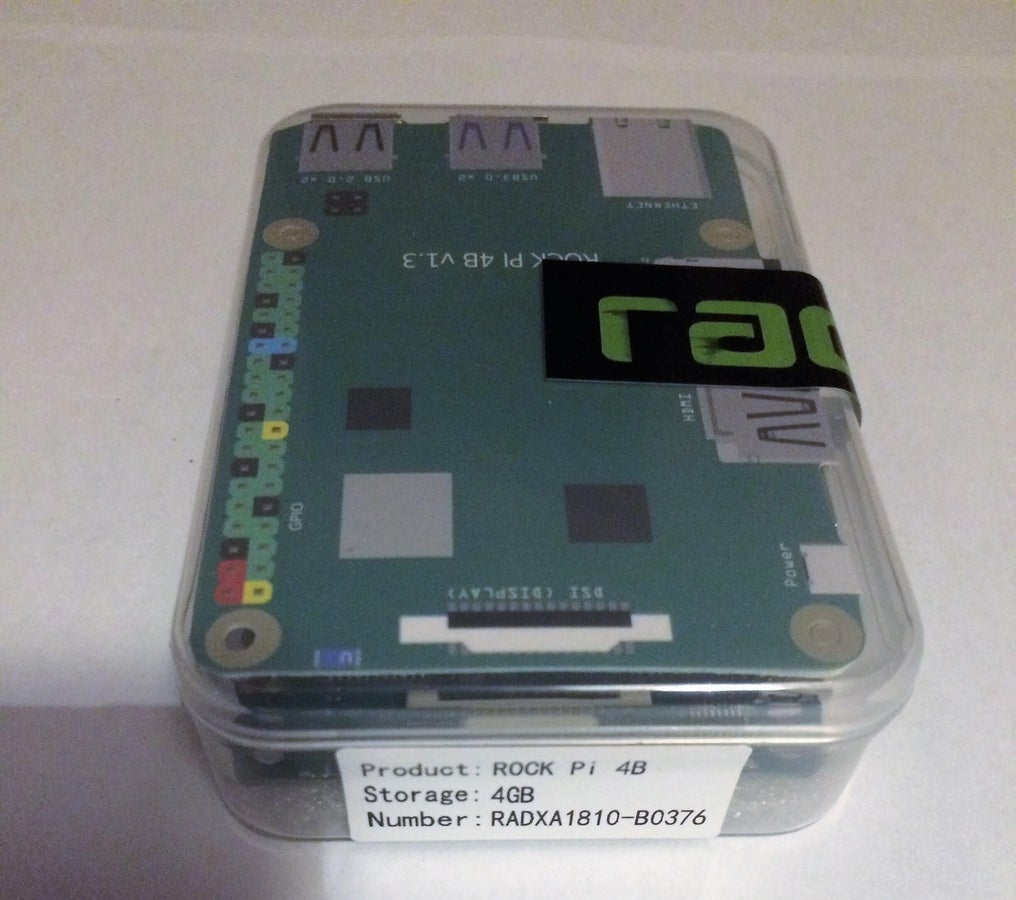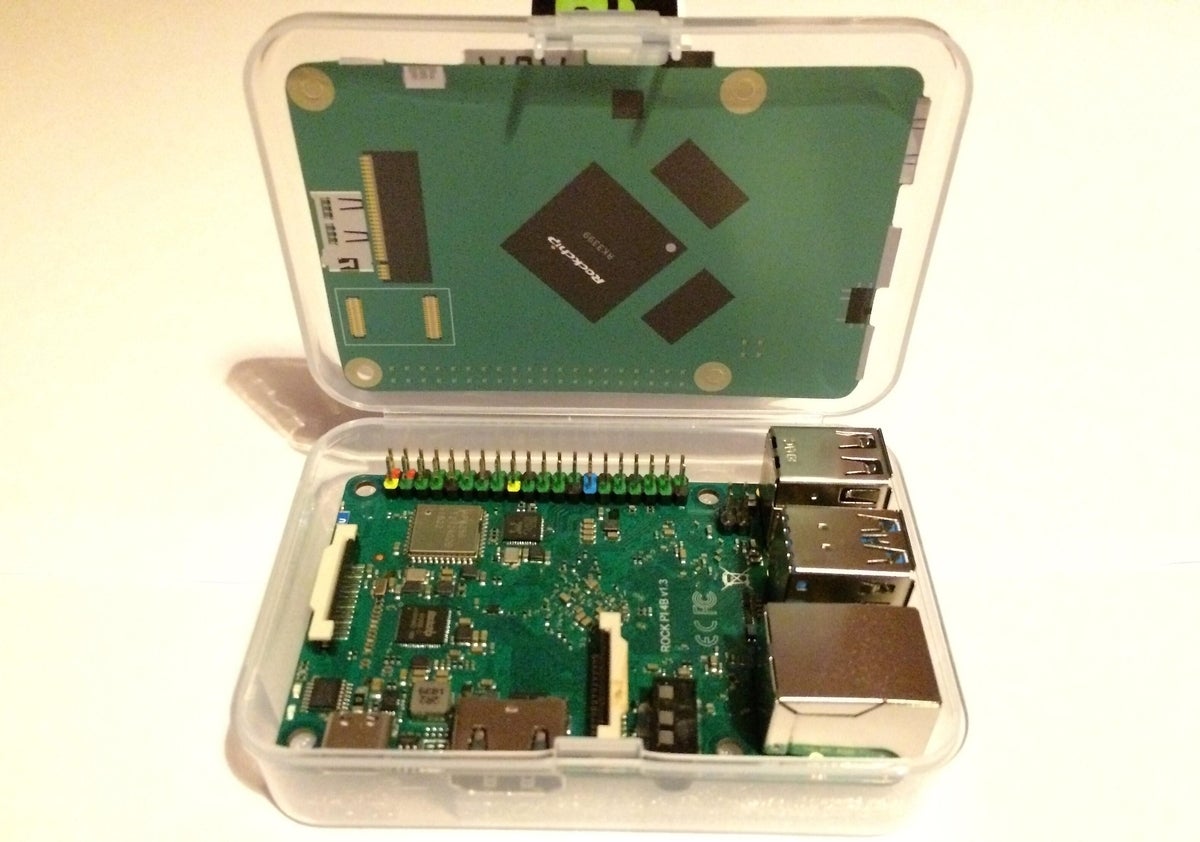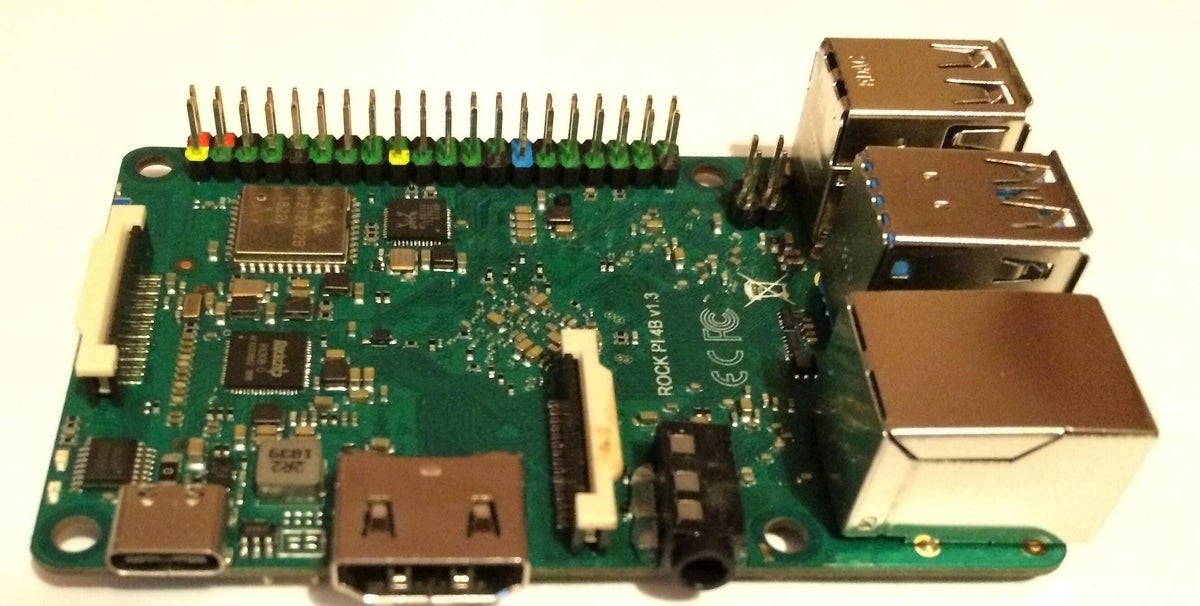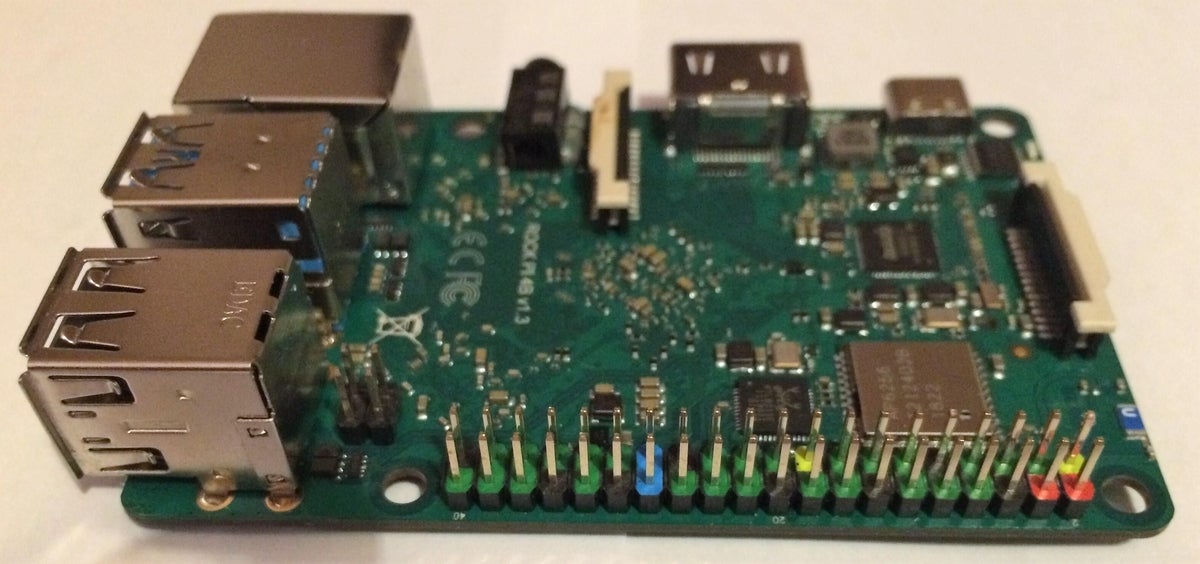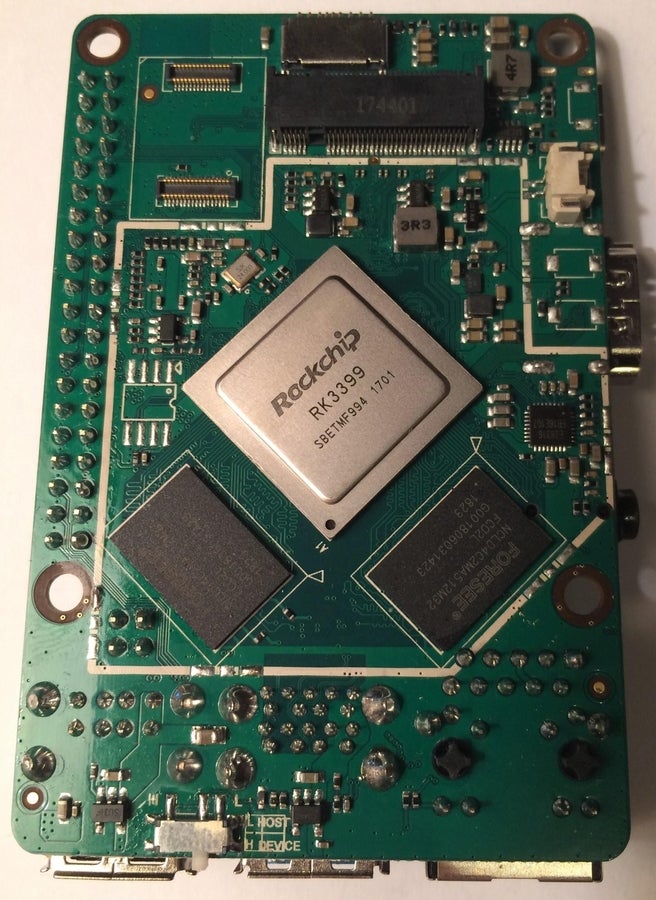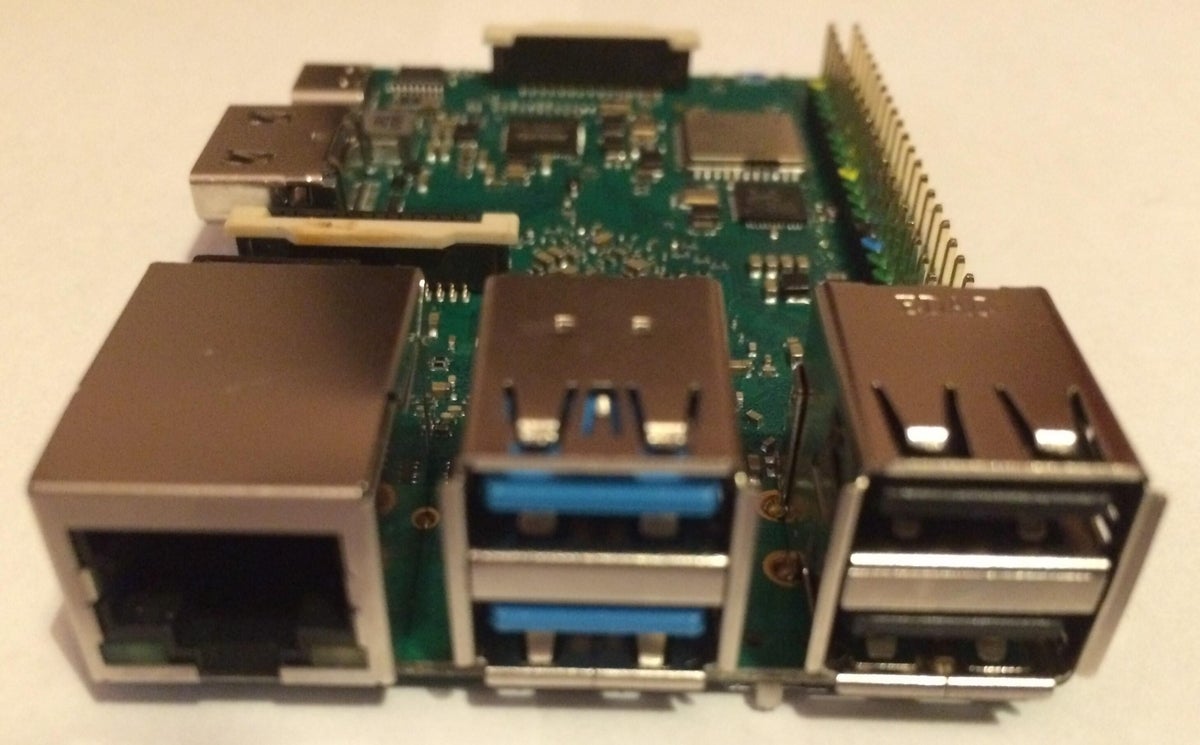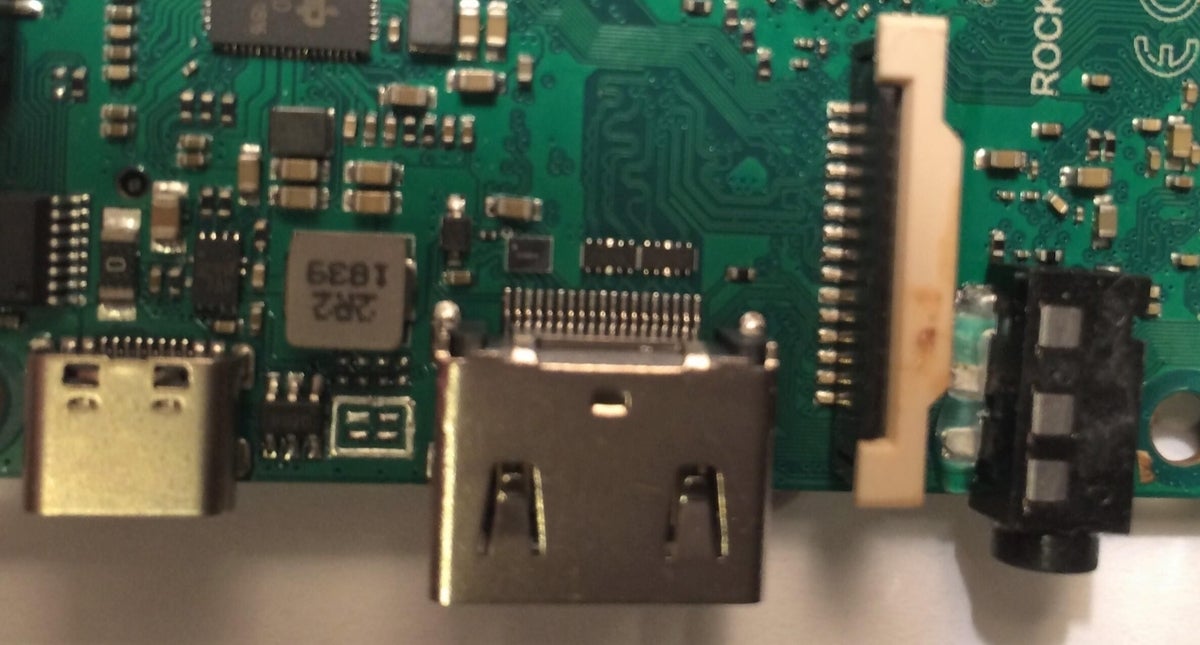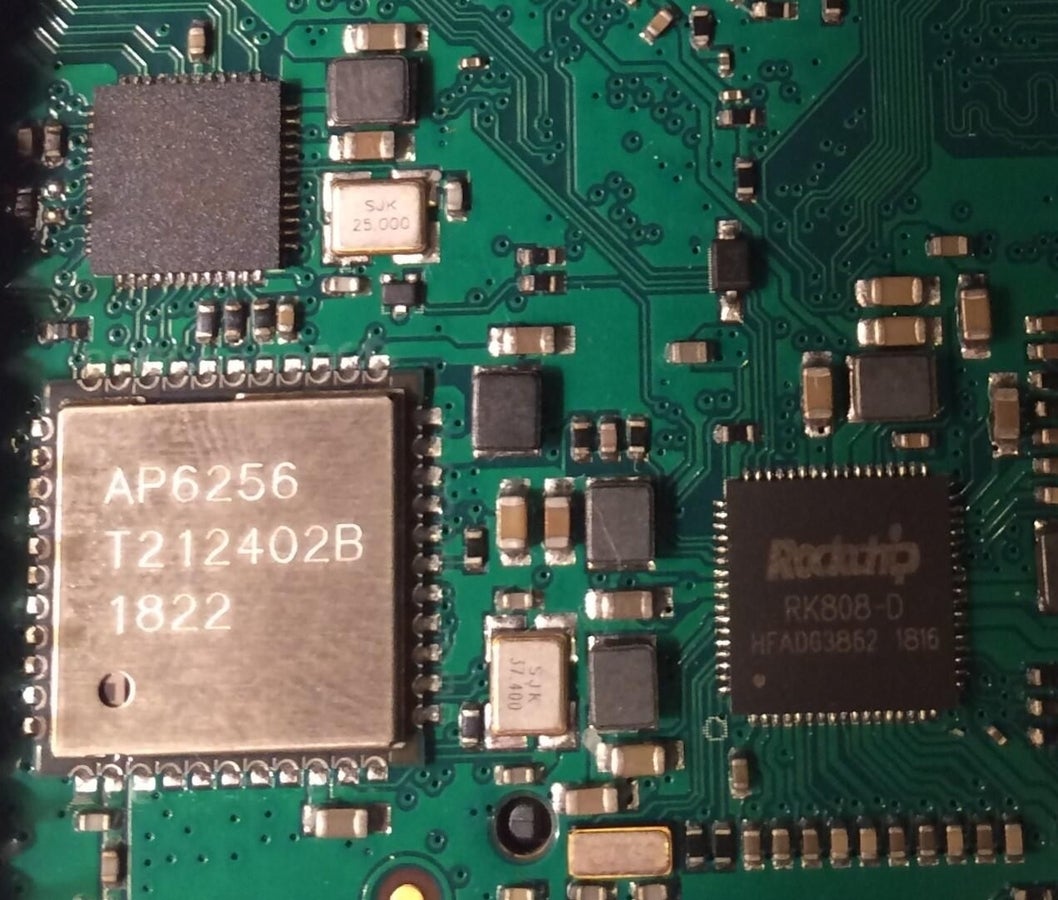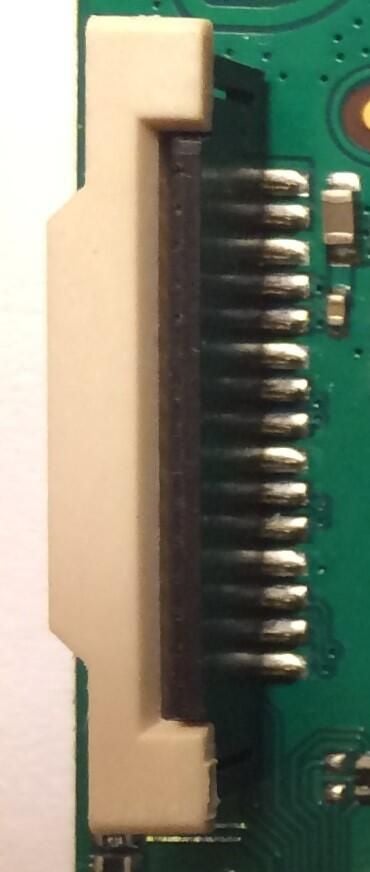Rock Pi 4: A closer look at the new Raspberry Pi challenger
Image 1 of 10
Anyone for Rock Pi?
This is the Rock Pi 4, the latest rival to the Raspberry Pi in the low-cost computing space.
Check out TechRepublic’s full review to find out how the Rock Pi 4 measures up to the Raspberry Pi, and why the Rock Pi isn’t a necessarily a better choice, despite its superior specs.
This is the 4GB of the Rock Pi 4 Model B, a board whose $75 price tag is more than twice that of the $35 Raspberry Pi 3 Model B+.
Click or swipe through the gallery, or hit the right arrow key, for a more detailed look at the board and its features.
Looks similar to Raspberry Pi
Here you can see the board is similar in shape and size to the Raspberry Pi, measuring 85mm u00d7 54mm.
While in practice that should mean the Rock Pi should fit many Raspberry Pi cases, I used the board with a supplied heat sink, whose bulk would likely rule many Raspberry Pi cases out.
Subtly different layout
The board itself also has a similar layout to the Raspberry Pi 3 Model B+, with notable differences, such as the use of USB Type-C for power and the inclusion of two USB 3.0 ports.
Benchmark boss
The board outperformed the Raspberry Pi 3 Model B+ in CPU and browser benchmarks, as well as in a practical test of how long it took to transfer a file.
The CPU
The underside of the board offers a clear look at the CPU on the Rock Pi 4’s RK3399 system-on-a-chip (SOC).
The board sports six CPU cores, a dual-core 1.8GHz Arm Cortex-A72 paired with a quad-core 1.5GHz Arm Cortex-A53 in a Big.LITTLE configuration, which swaps tasks between cores for greater power efficiency. The CPU is paired with a Mali T860MP4 GPU.
Also on the rear is the microSD card reader, which is one of the options for storage, alongside up to 128GB eMMC, and up to 2TB NVMe SSD via the board’s M.2 interface.
USB 3.0
On the left is the Rock Pi’s Gigabit Ethernet port, which supports Power over Ethernet (PoE) although it requires a hardware add-on to enable.
Also pictured are the four USB Type-A ports, one USB 3.0 host, one USB 3.0 OTG, and two USB 2.0 hosts.
In tests, the board’s USB 3.0 ports were able to transfer a 1.3GB file from the SD card to a memory stick 30 seconds faster than the Raspberry Pi 3 A+.
Hardware add-ons
The Rock Pi 4’s 40-pin header for connecting to boards, sensors and other hardware.
The header’s pin layout is similar to that of the Raspberry Pi but the Rock Pi’s maker Raxda said it wasn’t possible to make it “100% GPIO compatible”, so hardware add-ons for the Pi aren’t guaranteed to work with the board.
The header includes 1xUART, 2xSPI bus, 2xI2C bus, 1xPCM/I2S, 1xSPDIF, 1xPWM, 1xADC, 6xGPIO, 2x5V DC power in and 2x 3.3V DC power in.
USB Type-C and HDMI 2.0
A close up of the top of the board. On the far left is the USB Type-C port that is used for the board’s power supply.
In the middle is the HDMI 2.0 port for hooking the board to displays. Although the port has sufficient bandwidth to output a 4K image at 60FPS, I was unable to get the board to manage a smooth playback of 4K video in my limited testing.
To the right of the HDMI is the CSI Camera interface, which can support up to a 800MP camera and offers MIPI CSI with two data lanes via an FPC connector. On the far right is the 3.5mm audio jack.
Surface level
A close up of chips on the top of the board.
DSI display
This is the DSI display connector, which offers MIPI DSI with two data lanes via an FPC connector.
HDMI and MIPI DSI can work at the same time and support mirror or extend mode.
-
Account Information
Contact Nick Heath
- |
- See all of Nick's content
